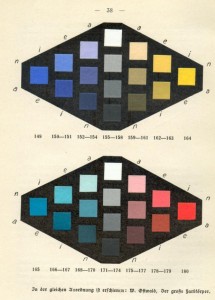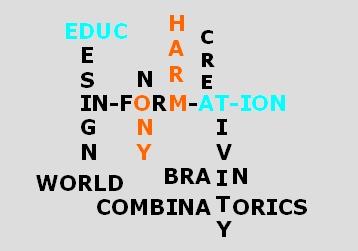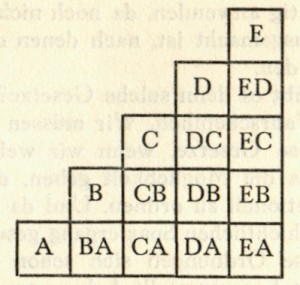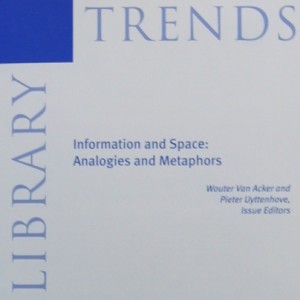Archive for the 'General' Category
March 8th, 2013 by thapke
 “Von der Kunst zur Wissenschaft und zurück : Farbenlehre und Ästhetik bei Wilhelm Ostwald (1853 – 1932) – From art to science and backward: theory of color and aesthetics by Wilhelm Ostwald (1853 – 1932)”
“Von der Kunst zur Wissenschaft und zurück : Farbenlehre und Ästhetik bei Wilhelm Ostwald (1853 – 1932) – From art to science and backward: theory of color and aesthetics by Wilhelm Ostwald (1853 – 1932)”
is the title of a new doctoral thesis in German language by Albrecht Pohlmann, 1910, University of Halle.
It describes also Ostwald’s activities with the Bridge, the Munich "Institute for the Organization of Intelellectual Work" (Chapter 4. 2. 2) and contains some further chapters of interest also for media historians like chapter 8.3. "The copied image" and others.
Wilhelm Ostwald (1853-1932), who was awarded the Nobel Prize in Chemistry in 1909, is among the scientists who have devoted themselves to the principles of visual design. This dissertation comprehensively represents, for the first time, the genesis of his colour theory in the scientific, art political, art historical and aesthetic context of its time. Since 1903 he devoted himself to painting technique, and finally, in 1914, he developed a colour atlas on behalf of the Deutscher Werkbund. His aim was to create an authoritative colour system as a means of understanding for artists, designers and architects, given the confusingly large amount of new colourants. Ostwald established a new theory of body colours based upon the four-colour theorem of Ewald Hering, which made it possible to measure colours in a simple manner. At the same time, from the organizing principles of his colour system (a colour solid in the form of a double cone) he developed a colour harmony. After World War I, he encountered protest of expressionist artists. Constructivists and functionalists took particular interest in his theories, such as with the Dutch ‘De-Stijl’ group, the Russian avant-garde movement and at the Bauhaus, where Ostwald taught in 1927 at the invitation of Walter Gropius. The main objective of his art technological research was to create a universal grammar of visual media in the era of the second technological revolution, hence his interest in photography, abstract film and picture transmission. The reproducibility of works of art appeared to him to be the requirement of a democratic society. His practical art technological experiments were embedded in a comprehensive art and media theory, which Ostwald had developed on the basis of his “Energetics” (1891) and his positivist “Philosophy of Nature” (1902).
December 4th, 2008 by thapke
Chemist and Nobel laureate Roald Hoffmann published an article on “combinatorical chemistry” with the title “Not a Library” in the journal Angewandte Chemie (International edition), 40(18), 3337-3340 (2001), which also mentioned Ramon Llull, Leibniz and the “Library of Babel” from Borges.

The article is available at the personal website of Roald Hoffmann who contains some further interesting articles on art or poetry and science, teaching and research, e.g.:
September 26th, 2008 by thapke
 Ostwald’s theory of forms has been the topic of a recent entry in the blog of Joost Rekveld.
Ostwald’s theory of forms has been the topic of a recent entry in the blog of Joost Rekveld.
In the writings of the film maker Joost Rekveld articles can be found with titles like “Symmetry and Harmonics” or “Transformations of Colour”.
June 18th, 2008 by thapke
Here is the trial, made quick&dirty, using a tool to compile a word cloud from the text of this weblog! Easy and funny! 😎

June 10th, 2008 by thapke
The conference Analogous spaces – architecture and the space of information, intellect and action, (15-17 May 2008, Ghent University, Belgium) has been over now more than 3 weeks. A lot of the presentations of the conference can now be found online.
The conference itself has been a place of Creative Combinatorics. Architects, computer scientists, engineers, information specialists, historians of art, historians of science, librarians, urban planners exchanged their views on analogous, virtual and digital spaces, on structure, form and architecture in information, knowledge and memory as well as on intellectual and social networks. The conference itself gives form and structure to a community of people which similar interests starting from a Belgian Renaissance Man and polymath Paul Otlet (1868-1944) and his activities, a community which met the first time in 2002 at Mons for a colloquium at the Mundaneum with the title “Architecture of Knowledge: the Mundaneum and European Antecedents of the World Wide Web” and the second time in 2005 at Urbana-Champaign within a conference titled “European Modernism and the Information Society: Informing the Present, Understanding the past”.
Personal pictures from the conference and the tour that followed:
May 13th, 2008 by thapke

Creative combinatorics is the subject of this blog as well as this blog is a way to explore this subject through creative combinatorics. So feel free to browse through using the categories or tags on the right or use the contents page which gives a short systematic overview.
May 9th, 2008 by thapke
Max Bense (1910 – 1990) was a German philosopher and writer, in the fields of philosophy of science, logic, aesthetics, and semiotics. He published books about the philosophy of nature as well as “aesthetical information” and information-theory-based aesthetics. Bense worked at the University of Stuttgart since 1949 becoming full professor in 1963. In addition, he worked at the adult education centre and at the College of Design in Ulm from 1953 to 1958.
May 9th, 2008 by thapke
Root-Bernstein described the connection between art and the sciences in the view towards creativity in his abstract:
Many people view arts and sciences as being different because sciences yield objective answers to problems whereas arts produce subjective experiences I argue that art and science are on a continuum in which artists work with possible worlds whereas scientists are constrained to working in this world. But sometimes perceiving this world differently is the key to making discoveries. Thus, arts and sciences are on a continuum in which artistic thinking produces possibilities that scientists can evaluate for efficacy here and now. Not surprisingly, then, many of the most innovative scientists have had avocations in the arts, and some of the most innovative artists have had avocations in the sciences. These polymaths have often written or spoken about how their arts involvments have benefitted their scientific creativity and may provide a model for fostering a more innovative education.
Robert Root-Bernstein: The art of innovation: polymthas and universality of the creative process, in: Larisa V. Shavinia (Ed.): The International Handbook of Innovation. Oxford: Elsevier, 2003. PP. 267-278.
He argues that “artistic scientists and engineers have more image-ination, musically talented
ones duet (do it) better, and the verbally inclined have the skills to become pundits. Seriously.” (p. 270), and cited (on p. 268) Ostwald who “produced a large body of work on scientific genius that validated the polymath hypothesis”.
This supported by J. Rogers Hollingsworth who argued that:
the wider the range of experience and knowledge of the scientist, the more fields of science his/her work are likely to influence and the greater the importance with which it will be perceived. (p. 140)
J. Rogers Hollingsworth, “High Cognitive Complexity and the Making of Major Scientific Discoveries,” in Arnaud Sales and Marcel Fournier, eds., Knowledge, Communication and Creativity. (London and Thousand Oaks, California: Sage Publications, 2007). pp. 129-155.
Ostwald is mentioned here in a table of “Twentieth-century scientists who made major discoveries and were also quite active in music, art, writing, crafts and politics” (pp. 142-144)
May 9th, 2008 by thapke
Based on Auguste Comte, Ostwald developed within his philosophy of nature a “pyramid of science†in which a “science of order†(he called it also “Mathetik”) was the basis.

Ostwald ordered the sciences within a pyramid. When working on a new topic, e.g. the color theory, he combined the new topic with every layer of his pyramid in a combinatorical way to exhaust all aspect of this subject. So he developed first a basic theory of colors (e.g. EA in the picture), then viewed color theory from a physical (EB), chemical (EC), physiological or biological (ED) and psychological (E?!) view.
Ostwald planned and published a multi-vlolume work on color theory whose partial volumes in each case dealed with one of the views mentioned above. He founded a journal “Die Frabe” (The color), starting 1921, which used his monographic principle and ordered the single issues, which contain only one article, according his – as he called it – “Comte-Ostwaldian” system of concepts.
 Five years after the “Analogous Spaces” conference its proceedings has been published with the title “Information and Space: Analogies and Metaphors” in a special issue of the journal “Library Trends” (Volume 61, Number 2, Fall 2012)
Five years after the “Analogous Spaces” conference its proceedings has been published with the title “Information and Space: Analogies and Metaphors” in a special issue of the journal “Library Trends” (Volume 61, Number 2, Fall 2012)




